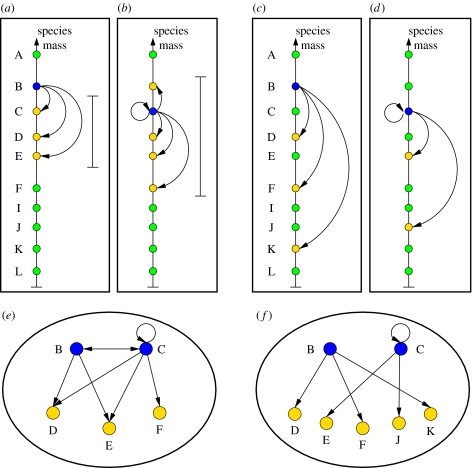Figure 2.
Two possible mechanisms for prey selection. Top and intermediate species can be assigned to trophic niches according to some ‘niche value’. This value is typically thought to be species mass, as predators predominantly prey on other species with mass less than or equal to their own. We represent predators as blue circles and prey as yellow circles. Other species are represented by green circles. (a) and (b) The predator preys upon species within a contiguous range, represented by the solid bar, as in the niche model. (c) and (d) The predator consumes prey with lower or equal niche value at random, as in the generalized cascade model. (e) Network representation of the corresponding food web. Under this prey selection mechanism, if two species appear in a double link and consume each other, they must be close together on the niche axis. In addition, their contiguous range of prey will overlap, making it likely that they have common prey. Similarly, two species which are close together on the niche axis are very likely to share predators owing to the contiguous range. (f) Network representation of the corresponding food web. Owing to the random prey selection mechanism, there is a substantially weaker relationship between the location of the two predators on the niche and the likelihood that they share predators and prey.

